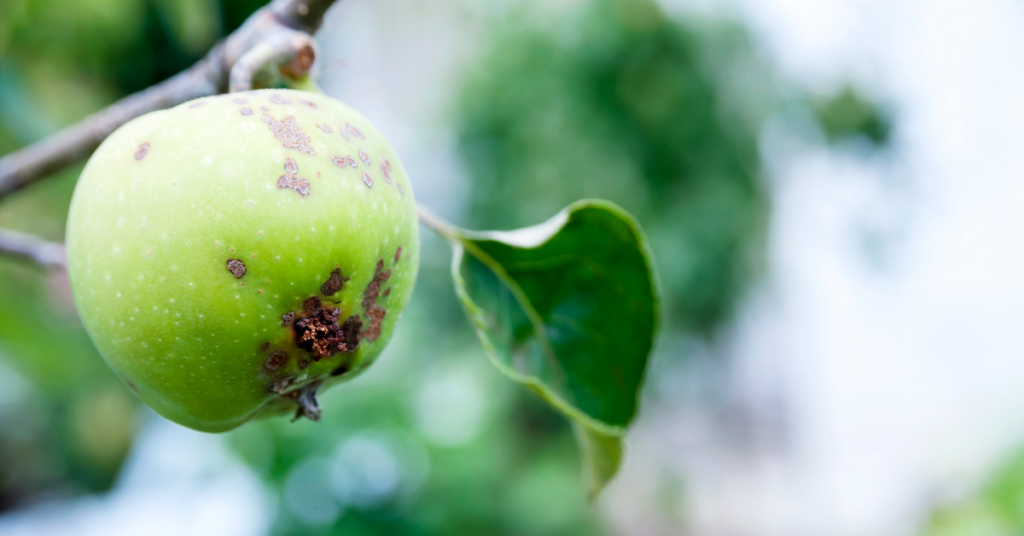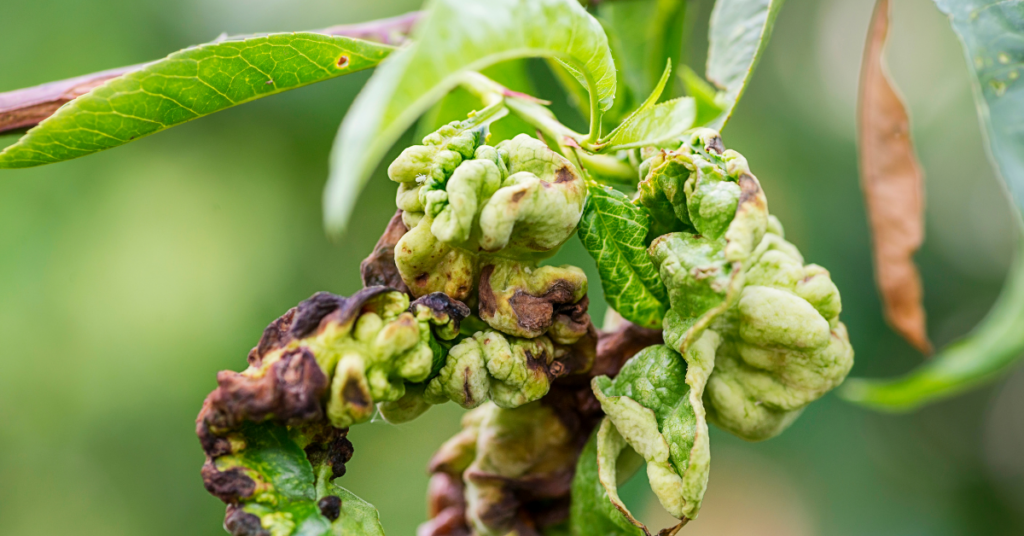A fruit tree is an amazing investment. You get to enjoy the beauty of a living tree and the inherent benefits such as providing shade and improving air quality. Plus, you get to reap ultimately delicious rewards! But with greater bounty comes greater responsibility—namely, protecting your fruit trees from common diseases.
In this thorough guide, we’ll discuss the most common fruit tree diseases, how to recognize them, possible treatments, and prevention tips.
Why Do People Care About Common Fruit Tree Diseases?
When it comes to food safety, fruit trees are no exception. There is nothing more disappointing than investing time, energy, and money into growing a healthy fruit tree, only to have it succumb to disease.
Luckily, there are certain measures you can take to mitigate the risk of infection by common fruit tree diseases. Understanding the problems, recognizing the symptoms, and taking steps to prevent them from occurring is key.
What Are The Most Common Diseases That Affect Fruit Trees?

Peach Scab and Leaf Curl
Peach scab and leaf curl are caused by fungi and present very distinctive symptoms like discolored leaves or fruit with rough, corky spots. These infections are commonly seen in areas with humid climates. To treat this type of infection, remove affected leaves and use fungicides if necessary.
Brown Rot
Brown rot is one of the most destructive fruit tree diseases, attacking stone fruits like cherries, plums, peaches, apricots, and nectarines. It causes the fruit to rot and become covered with brown lesions, which eventually turn black within a few days. This disease can easily be spread by splashing water, so it is important to plant resistant cultivars when possible and prune regularly.
Bacterial Canker
Bacterial canker is another very destructive disease that affects a wide variety of fruit trees including apples, cherries, plums, and pears. It is characterized by sunken areas on the bark of the tree and lesions on the leaves, twigs, and fruits. Infected leaves will often appear yellow and twisted. To treat this condition, prune infected branches and apply fungicides.
Black Rot
Black rot is a fungal disease that affects apples, pears, quinces, and crabapples. It is characterized by light-colored spots on the leaves and black lesions on the fruits. To stop further spread of this disease, remove infected fruit and leaves, as well as any nearby wild hosts. Applying fungicides may help, but resistant varieties should be planted when possible.
Apple Scab
Apple scab is a fungal disease that is particularly prevalent in wet weather conditions. It is identified by velvety olive-green spots on the upper surface of the young leaves and dark, scabby lesions on the fruits. Pruning and applying fungicides can reduce the severity of this disease.
To ensure you’re employing the correct tree care techniques, it’s essential to understand the difference between tree trimming and pruning. Our article on What Is the Difference Between Tree Trimming and Pruning? explains the distinctions and helps you determine the appropriate approach for maintaining your fruit trees’ health and appearance.

How Do I Know If My Fruit Tree Is Suffering From a Disease?
Fruit tree diseases can all look different depending on the species affected and the stage of the infection. However, there are some common signs to look out for, such as delayed bud break, small and sparse pale green leaves, reduced shoot growth, necrotic lines around the graft union, orange-colored spongy grafts, and even whole branches or the entire tree dying off.
What Are The Symptoms Of Common Fruit Tree Diseases?
The symptoms of common fruit tree diseases vary depending on the disease in question. Some of the most common diseases, such as peach scabs and leaf curls, can be identified by holes in the leaves, along with new shoots and whole branches dying off. Brown rot causes fruit to rot and become covered in brown lesions. A bacterial canker is known for causing sunken areas on the bark and yellow, twisted leaves. Black rot presents as light-colored spots on the leaves and black lesions on the fruits. An apple scab is identified by velvety olive-green spots on the upper surface of the young leaves and dark, scabby lesions on the fruits.
What Treatments Are Available For Common Fruit Tree Diseases?
Treating common fruit tree diseases shouldn’t be taken lightly. Depending on the severity of the infection, professional guidance may be necessary. That said, here are some of the most effective treatments available:
Monitor Your Fruit Trees for Problems
The first step in treating any tree disease is knowing what to look for. Monitor your fruit trees regularly for problems, such as damage to the bark and leaves, and make sure to act quickly when a problem arises.
Employ or Encourage Biological Methods to Control Insects
In some cases, using biological methods to control insects can be an effective way to prevent fruit tree diseases. Ladybugs, for example, are great at controlling mite populations, while lacewings eat aphids, mealybugs, whiteflies, and mites.
Spray Your Fruit Trees During Their Dormant Season
Applying fungicides during the dormant season can go a long way in inhibiting harbored disease colonies. Choose a product specifically designed for edible crops and make sure to read and follow all label instructions before use.
Treat Severe Disease Infestations With Chemical Microbicides
For severe disease infestations, chemical microbicides can be used to control various fungi, bacteria, and viruses. Read and follow all label instructions carefully before applying, and use protective clothing when handling these chemicals.
Once you’ve successfully treated fruit tree diseases, you might be left with a tree stump in your front yard. Our article on What to Do With a Tree Stump in the Front Yard? Hide It! offers creative solutions to effectively handle and aesthetically address tree stumps in your outdoor space.

How Can I Prevent My Fruit Trees From Getting Diseases?
Prevention is often much easier than treating a diseased fruit tree. Here are some tips for preventing common fruit tree diseases:
Select Disease-Resistant Cultivars
Selecting fruit tree cultivars that are resistant to disease is the best way to prevent common fruit tree diseases. Talk to your local nursery about recommended varieties for your area.
Additionally, it’s important to be aware of the signs that indicate it might be time to remove a tree. In our article on 6 Signs It Might Be Time To Remove Your Tree, we discuss common indicators of tree decline or hazards that necessitate removal. Understanding these signs can help you make informed decisions about tree care and safety.
Use Fencing
Protecting small fruits and tree fruits from deer is also a great way to reduce the risk of disease. Fences can be an effective deterrent, as long as they’re kept in good condition.
Remove and Dispose Of All Infested and Diseased Plant Parts
Once you’ve identified a diseased tree, make sure to remove and dispose of all affected parts, including dropped fruits and leaves. This will minimize the risk of spreading the disease to neighboring trees.
Hand-Pull Weeds or Apply Organic Mulches
Weeds can harbor disease-causing organisms, so hand-pulling them or using organic mulches to keep them away from your fruit trees is a must. Additionally, using organic mulches can help keep the soil moist and cool, which can reduce the risk of disease.
Know the Local Problems and Plant Well-Adapted Varieties
Make sure to do your research and find out which varieties are better suited for your region and climate. Different fruit tree species have different disease susceptibility, so choose wisely.
Learn more about the importance of proper pruning techniques in our article on Proper Pruning Practices. By employing these techniques, you can effectively maintain the health and structure of your fruit trees, reducing the risk of common diseases.
Are There Any Natural Remedies For Common Fruit Tree Diseases?
Yes, there are natural remedies for common fruit tree diseases. Compost tea and baking soda are two of the most popular solutions. Compost tea is made by steeping compost in water for several days and then diluting the resulting mixture before spraying it on the trees. Another effective remedy is baking soda, which helps control powdery mildew by preventing it from growing on the surface of leaves.
Conclusion
Fruit trees can be extremely rewarding additions to any garden or landscape. Unfortunately, they can also be vulnerable to common diseases. By understanding the problem, recognizing the symptoms, and taking preventive measures, you can greatly reduce the risk of disease in your fruit trees. Remember to select disease-resistant varieties, employ biological controls, spray during dormant season, and remove and dispose of infested and diseased plant parts. Finally, there are a few natural remedies like compost tea and baking soda that can be helpful in some cases.
Ready to protect your fruit trees from common diseases and ensure their health and productivity? Don’t hesitate to take action! If you’re in the Victoria area, our team of professional tree services is here to assist you. With our expertise in tree care and maintenance, we can provide tailored solutions to keep your fruit trees in top shape. Visit our homepage for tree services in Victoria to learn more about our comprehensive offerings and schedule a consultation. Let’s work together to protect your investment and enjoy the bountiful rewards of healthy, disease-free fruit trees.


